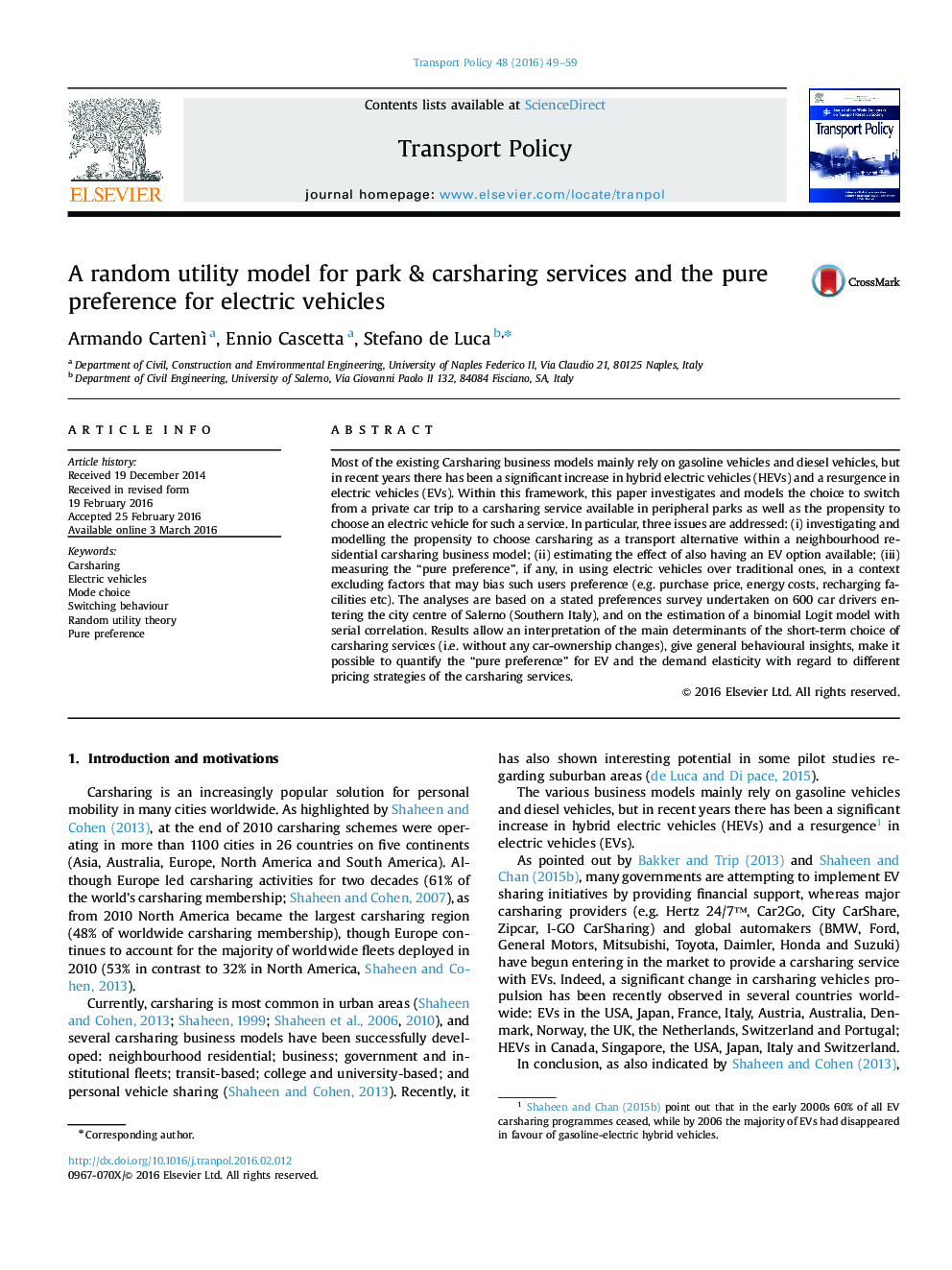| Article ID | Journal | Published Year | Pages | File Type |
|---|---|---|---|---|
| 1064713 | Transport Policy | 2016 | 11 Pages |
•Park & carsharing may be a valid transport option for neighbourhood residential users.•The most statically significant attributes are travel cost and travel time.•Behaviour is significantly affected by the user׳s socioeconomic characteristics.•EV availability increases the probability of switching to carsharing.•The “pure preference” toward EV is quantified at 1.56 euros per trip.
Most of the existing Carsharing business models mainly rely on gasoline vehicles and diesel vehicles, but in recent years there has been a significant increase in hybrid electric vehicles (HEVs) and a resurgence in electric vehicles (EVs). Within this framework, this paper investigates and models the choice to switch from a private car trip to a carsharing service available in peripheral parks as well as the propensity to choose an electric vehicle for such a service. In particular, three issues are addressed: (i) investigating and modelling the propensity to choose carsharing as a transport alternative within a neighbourhood residential carsharing business model; (ii) estimating the effect of also having an EV option available; (iii) measuring the “pure preference”, if any, in using electric vehicles over traditional ones, in a context excluding factors that may bias such users preference (e.g. purchase price, energy costs, recharging facilities etc). The analyses are based on a stated preferences survey undertaken on 600 car drivers entering the city centre of Salerno (Southern Italy), and on the estimation of a binomial Logit model with serial correlation. Results allow an interpretation of the main determinants of the short-term choice of carsharing services (i.e. without any car-ownership changes), give general behavioural insights, make it possible to quantify the “pure preference” for EV and the demand elasticity with regard to different pricing strategies of the carsharing services.
